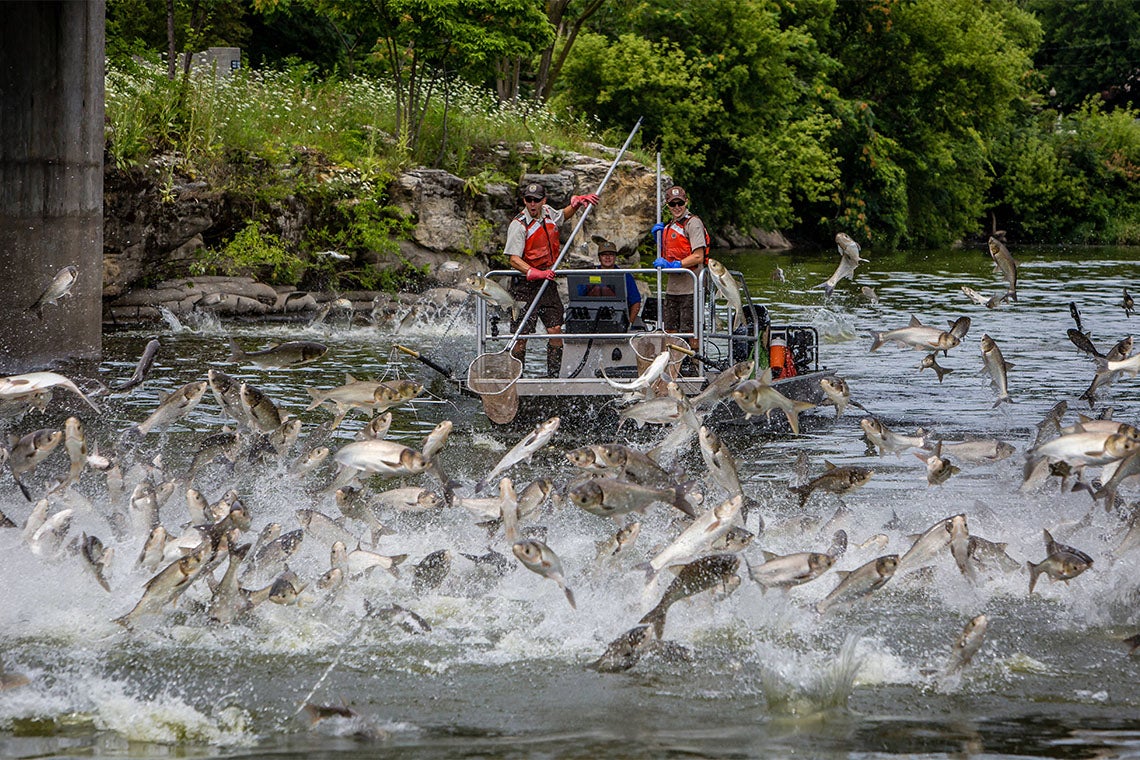
Nick Mandrak has just about seen it all over his 30-plus-year career as an invasive aquatic species researcher.
From goldfish infesting local stormwater retention ponds to pulling a bighead carp out a fountain just south of Queen’s Park, the University of Toronto researcher’s stories range from cautionary to what could be considered comical – if the underlying problem wasn’t so serious.
Now Mandrak is teaming up with an international group of researchers to call on governments around the world to adopt tougher policies tackling invasive species before it’s too late.
“Both global warming and emerging global trade pathways are accelerating the spread of invasive species, and the problem is going to get worse unless something is done,” said Mandrak, a professor in the department of biological sciences at U of T Scarborough.

Along with more than 20 colleagues from across the globe, Mandrak recently published a paper in Biological Reviews warning about the consequences of invasive species.
Since the 1970s, the researchers note that the number of invasive alien species (non-native species that invade an ecosystem and establish reproducing populations) has risen 70 per cent in 21 countries around the world that keep data on the phenomenon. The species pose serious risks to the ecosystems they invade, including reducing the abundance and genetic diversity of native species and, as a result, increase the risk of native species’ extinction.
While most people tend to associate invasive species with obviously destructive pests like the emerald ash borer – which has destroyed millions of ash trees across Canada – or Asian carps, infamous for their jumping behaviour in the Mississippi River, many invasive species can subtly disrupt ecosystems by altering their ability to cycle nutrients. Mandrak points to the local example of round goby, an invasive fish species found in Lake Ontario that can outcompete native white sucker fish.
“Like salmon, native white suckers swim upstream every spring to spawn, leaving a lot of nutrients in the form of eggs and dead bodies behind when they do. This plays a big role in the entire nutrient cycling of Lake Ontario, which we will lose if they get outcompeted by round goby,” said Mandrak, pointing to a preliminary finding by U of T Scarborough PhD Meagan Kindree.
Invasive species are also creating a situation where ecosystems around the world are becoming more similar to one another. Research in Mandrak’s lab by PhD student Sara Campbell has found that the Great Lakes are becoming more homogenized as a result of invasive species. What’s more, because of the human transfer of species to distant bodies of water around the world, fish communities in places like the Black Sea and the Great Lakes are beginning resemble each other.
Mandrak said that if the environmental and economic impacts are not enough to convince people to take action, there are also the potential consequences for human health.
He points to zebra mussel, an invasive species found throughout the Great Lakes that is linked to toxic algae blooms that can drastically affect water quality, or the Chinese mitten crab that carries a parasitic worm that can cause lung infections in humans, to name just a few.
“We need to think of invasive species like viruses, except instead of invading our body they are invading our ecosystems,” Mandrak said.
“The scientific evidence is abundantly clear – these organisms are not native and they are having profoundly negative ecological, economic and human health impacts. Our concern is that, despite all of this evidence, governments are still lagging behind in their response. What we’re saying, as scientists, is that it’s time to do something about it.”




